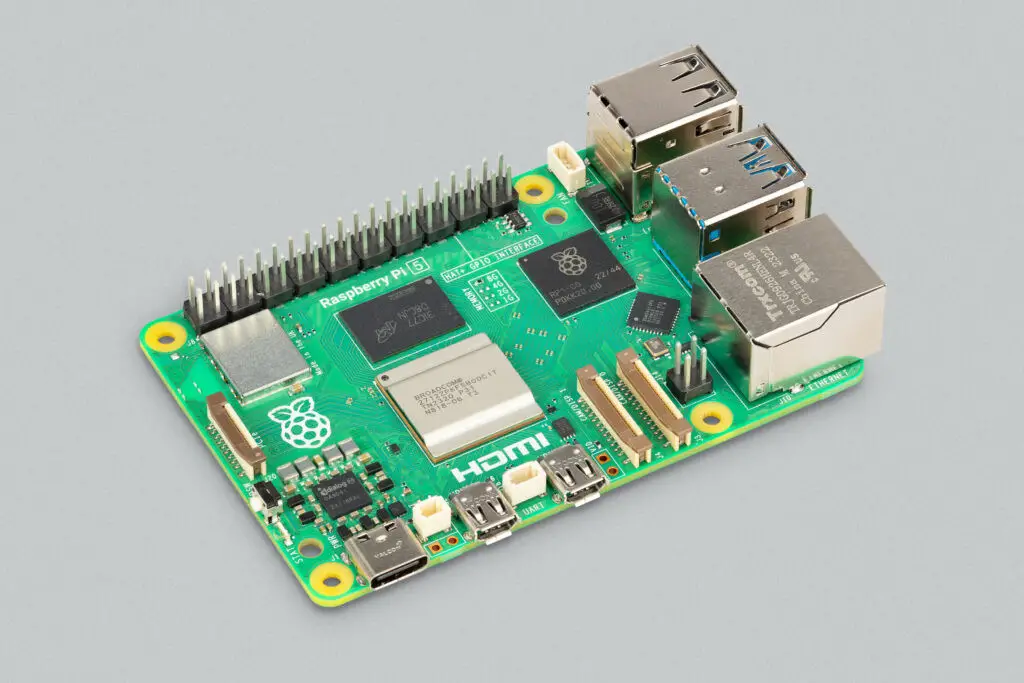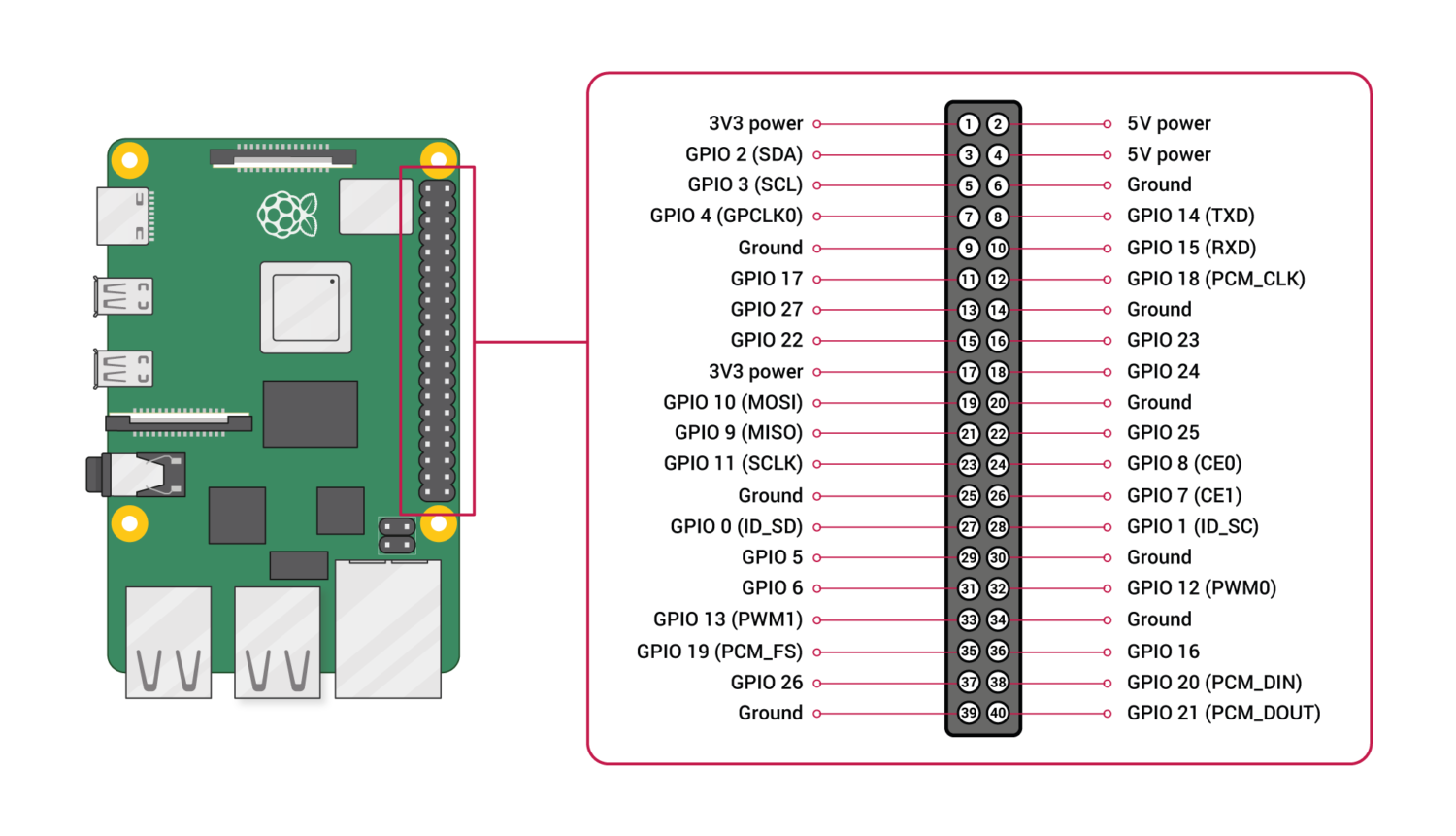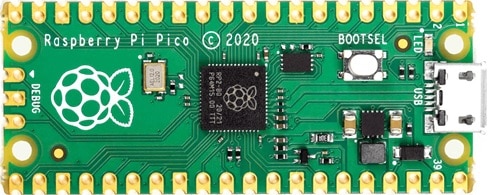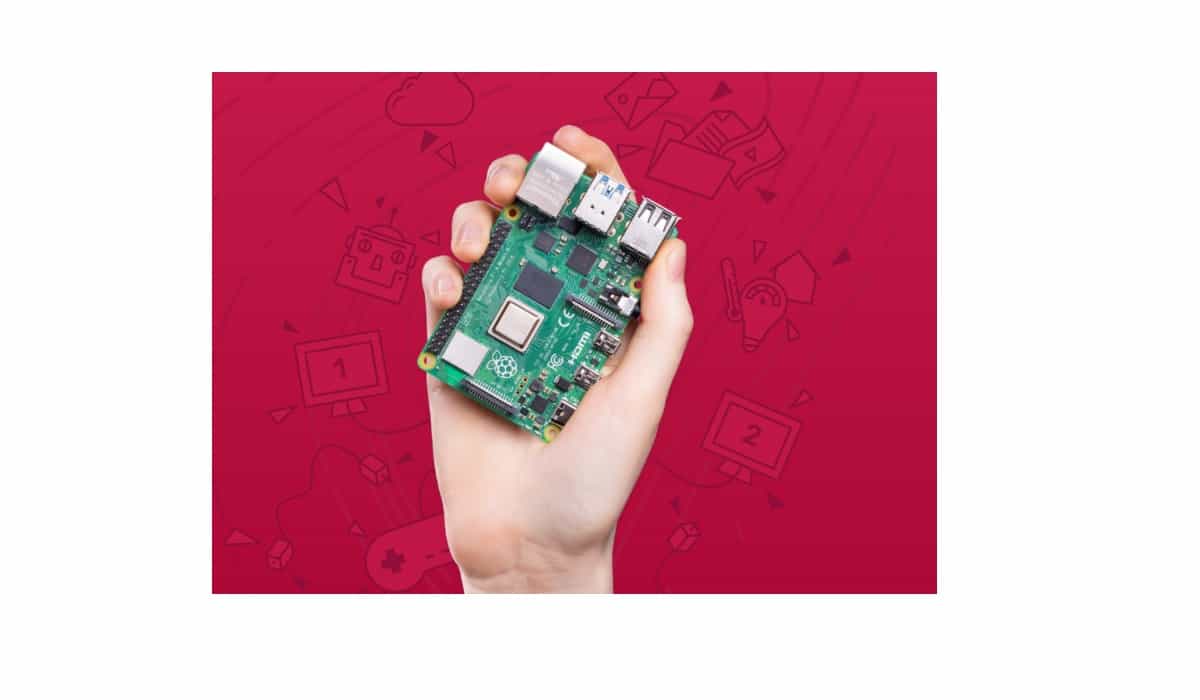Last Updated on 9th June 2024 by peppe8o
Many people wishing to get started with microelectronics and programming can hear on the web about “Raspberry PI”. Before starting to buy, they could ask themselves what is a Raspberry PI. So this article will help you to understand what it is and if this can fit your learning needs.
The Raspberry PI Foundation
Before talking about the boards, it is useful to know a bit more about the organization which gives the name to these boards.
The Raspberry PI Foundation is a charity organization founded in 2009 in the UK. The founders were Eben Upton, Rob Mullins, Jack Lang, and Alan Mycroft. At the Foundation born, their mission was to put the power of computing and digital making into the hands of people all over the world. Now, their mission evolved to enable young people to realise their full potential through the power of computing and digital technologies.
In early 2013, the Foundation split its activities, moving board design and production into the “Raspberry PI Ltd”, which remained a subsidiary of the Foundation and its earnings are used to fund the Foundation’s charity projects.
The following table shows the number of boards sold (till 2023), where you can see the increasing number of boards sold in the years:
| Year | Number of Raspberry Pi Boards Sold | Source |
|---|---|---|
| 2012 | 100,000 | Raspberry Pi Foundation Annual Report 2012 |
| 2013 | 1.2 million | Raspberry Pi Foundation Annual Report 2013 |
| 2014 | 2.5 million | Raspberry Pi Foundation Annual Report 2014 |
| 2015 | 6.5 million | Raspberry Pi Foundation Annual Report 2015 |
| 2016 | 12.5 million | Raspberry Pi Foundation Annual Report 2016 |
| 2017 | 17.5 million | BBC |
| 2018 | 25 million | Raspberry Pi Foundation Annual Report 2018 |
| 2019 | 36 million | Raspberry Pi Foundation Annual Report 2019 |
| 2020 | 43 million | Raspberry Pi Foundation Annual Report 2020 |
| 2021 | 52 million | Raspberry Pi Foundation Annual Report 2021 |
| 2022 | 62 million | Raspberry Pi Foundation Annual Report 2022 |
| 2023 | 72 million | Raspberry Pi Foundation Annual Report 2023 |
The Raspberry PI Computer boards
The common knowledge associate Raspberry PI with credit-card sized, single-board computers, able to run a complete Linux computer. For this reason, I will write about the “Raspberry PI Pico” later in this post, as this is a really different board.
Educators love Raspberry PI computer boards as they make simple and funny to approach programming with different languages. It is also a loved part for DIYers because, beyond USB ports and ethernet port, it has connectors able to interface microelectronic components and many other accessories with simple coding. Click the following image to get redirected to your local Amazon store to check Raspberry PI computer board prices.

Besides the release number, there are a few version of Rasberry PI models to know:
- Model B (and 400): the oldest models, they have the most new technology from the Raspberry PI products. They have full computing power (CPU, RAM, GPU) allowed by the board technology and include wireless connectivity (WiFi and Bluetooth). With the Raspberry PI 400, the board includes an all-in-one keyboard module with the Raspberry PI 4 integrated inside it.
- Model A: they are built with the same technology as B models, but with some less hardware to make them a bit cheaper. Usually, they have less RAM, fewer USB ports and they don’t have an ethernet port (so, you will use it with WiFi for internet connection)
- Zero: they are the cheapest computer boards from the Foundation, usually priced around 20$ (from the approved resellers). They have still less hardware compared to A models (keeping WiFi for internet connection in the W model), and they use a USB on-the-go port instead of USB (you need an adapter to connect USB devices). But they are enough to run programming and microelectronics projects. On the other side, they consume less power compared to the previous models
- Compute Module: they fit the needs for industry usage. They are sold in a chip-style form and don’t have any external ports (like USB, or Ethernet), needing a carrier board to run.
The following table shows you the different models with their release years:
| Raspberry Pi Model | Year of Production |
|---|---|
| Raspberry Pi Model B | February 2012 |
| Raspberry Pi Model A | March 2012 |
| Raspberry Pi Model B+ | March 2014 |
| Raspberry Pi Model A+ | October 2014 |
| Raspberry Pi Zero | November 2015 |
| Raspberry Pi Zero W | February 2017 |
| Raspberry Pi Zero WH | December 2017 |
| Raspberry Pi 3 Model B | February 2016 |
| Raspberry Pi 3 Model A+ | November 2018 |
| Raspberry Pi 3 Model B+ | October 2018 |
| Raspberry Pi 4 Model B | June 2019 |
| Raspberry Pi 4 Model B 4GB | May 2020 |
| Raspberry Pi 4 Model B 8GB | May 2020 |
| Raspberry Pi Compute Module 4 | October 2020 |
| Raspberry Pi 400 | November 2020 |
| Raspberry Pi 4 Model B (Mid-2021 Enhancement) | May 2021 |
| Raspberry Pi Zero 2 W | October 2020 |
| Raspberry Pi 2 Model W | November 2021 |
| Raspberry Pi 5 Model B | September 2023 |
Technical Features
What is common to these boards is the very low price (starting from 20$ for a complete computer with the Zero boards) and all-in-one board (which includes processor, memory, USB and video ports, wireless connectivity (Wi-Fi and Bluetooth). This is the reason why it is referred to as a single-board computer. Some models (named “Model B”) include also wired connection.
Another Raspberry PIs common feature is that they use a micro SD card instead of hard drive. USB ports are available in all models, but in PI Zero it requires an adapter. Model A has only 1 USB port, while all remaining PI models have 4 USB ports.
The First Raspberry PI computer board was marketed in 2012. The original PI (Raspberry Pi Model B) had a single-core Broadcom SoC operating at 700MHz and 256MB of RAM. From here, several versions have been released with increasing CPU and RAM power, up to the most recent Raspberry PI Foundation boards which are comparable with small personal computers.

GPU has always shared memory with RAM. From the common “raspi-config” terminal command you can manage memory allocation according to your needs. Video output can be connected by HDMI port, which was doubled in new Raspberry PI models to enable the extended screens.
All available PIs in commerce have Wi-Fi and Bluetooth (BLE) connectivity.
Older models had a GPIO composed of 26 pins (standard). From PI 2 onwards, it was replaced with a richer 40-pin GPIO interfacing enabling Raspberry PI to communicate with external cheap sensors (like humidity sensor, ultrasonic distance sensor and so on). Every pin has its own function and the 40-pin GPIO mapping is the same for all the Raspberry PI computer boards. the functions are described in my Raspberry PI Zero Pinout tutorial.

A comparison between the datasheets from the different boards is available in my Comparison of Raspberry PI Models post.
Raspberry PI Operating System Setup Methods
Raspbian (based on Debian) has been for years the default PI OS. From 2020 Raspberry PI Foundation forked its own default OS, which was named “Raspberry PI OS”. Raspbian remained alive for the open-source community which is maintaining this historical OS.
During the last years, many other Linux distributions extended their support for PI. Some of these are Ubuntu, CentOS, Fedora and RiscOS (besides the obvious Debian). A complete list of operating systems is available in my Alternative Raspberry PI OS list post, which includes links to the related tutorials.
Lite OS (Headless) Meaning
In the simplest configuration, Raspberry PI needs a common Micro SD card and a power supply (can be a common smartphone charger with enough Ampere capacity). You will only need a Wi-Fi (or wired) network to connect the board.
With those pieces, you can setup the so-called “headless installation”. This means that you will install and manage your Raspberry PI operating system from a remote personal computer, without the need of other devices connected to your RPI (no monitor, no keyboard, no mouse).
For this setup, you will use the Raspberry PI OS Lite version. Please refer to Raspberry PI OS Lite installation tutorial for the complete procedure.
Desktop OS Meaning
You can get a complete desktop computer with Raspberry PI using, besides a micro SD card and power supply, a USB keyboard (with touchpad or USB mouse) and monitor. In this configuration, a network (Wi-Fi or wired) is desirable for connecting internet resources.
With those pieces, you can setup the so-called “Desktop installation”. This means that you can completely manage your Raspberry PI locally with its attached monitor and keyboard and it will work (also) as a normal personal computer.
For this setup, you will use the Raspberry PI OS Desktop version. Please refer to Raspberry PI OS Desktop installation tutorial for the complete procedure.
For a deeper comparison between lite and desktop distributions, please refer to Raspberry PI OS Lite vs Desktop guide.
The Raspberry PI Pico Microcontroller
In January 2021, the Raspberry PI Foundation published a very new board, the Raspberry PI Pico. Differently from all the previous boards, this isn’t a complete computer and this opened a new market to Raspberry PI lovers.
The main difference is that computers are general-purpose electronic devices, made to run a wide variety of programs with higher computing capabilities (CPU, RAM, storage, and peripherals). They usually have higher costs and they need several software components to run (like Firmware, Operating System, drivers, and so on). On the other hand, microcontrollers have lower computing capabilities, but they are usually specialized for simpler tasks. They don’t use an operating system, as they can run simpler programs (even in infinite loops) without the need to care about other application component errors or specific boot sequences. They are really cheap (Raspberry PI Pico costs much less than 10$). As they have a more stable program flow, they better fit the needs of microelectronics projects and industrial usage.
The Raspberry PI Pico comes with a micro-USB port (to connect the Pico from a computer and arrange programs to run), 30-pin GPIO header (to connect sensors, motors, and any microelectronic device). Moreover, the Raspberry PI Pico W also adds WiFi and Bluetooth connectivity to fit the needs of IoT projects (click on the picture to reach your local Amazon store to check Raspberry PI Pico prices).

They have a smaller form factor compared to the Raspberry PI computer boards (21mm x 51.3mm) and they consume far less power (around 40mA), so you can easily use them with batteries or small solar cells.
Raspberry PI Usages
Raspberry PI is a very versatile board. So, want you to know what is Raspberry PI useful for? Check the following:
…for DIYers
Its built-in GPIO pins allow makers and DIYers to develop intelligent programs which react based on external world inputs or interact with them. Common usage is managing robots, radio frequency components, and peripherals. For this purpose, the low cost and low power consumption PI Zero W can be the best choice when low CPU (SoC), RAM and GPU usage is required. Pi Zero W also performs very fine with Python programming language.
…for Programming
Its software universe and wide community make it a special opportunity for educators and kids (and people less young…) wanting to teach/understand programming basics. This blog (peppe8o.com) and the same Raspberry PI official website (maintained by Raspberry PI Foundation) are plenty of Python scripts, as well as scratch, java, javascript, and C languages, which are widespread and MicroPython/C scripts for Raspberry PI Pico.
The MagPI (official Raspberry PI Foundation free magazine) includes also many resources from hobbyists all around the world, who share their inspiring projects with all passionates. PI can also run complex programs, so it is sometimes also used by industries in their products.
…for Linux Systems (only Raspberry PI computer boards)
Don’t forget that Raspberry PI computer boards have Linux in their heart. So a long list of Linux distributions and open-source software can run on Raspberry PI making it a small but powerful server. Ethernet connections in the Model B series (upgraded to Gigabit ethernet in PI 4) grant enough speed to communicate quickly with the world. In these projects, high-speed SD cards can improve performances when output requires a strong workload. A typical usage is in Media Center (like Kodi and its derivates), home automation, retro games emulator (Retropie), and many others up to having your Minecraft server!
…for Home Computer (only Raspberry PI computer boards)
Last but not least, Raspberry PI computer boards can be also very small personal computers, which you can also bring with you or give to your kids to start computer knowledge. Connect an HDMI cable to your monitor or TV (please check HDMI type in Raspberry PI boards comparison article before shopping), a keyboard and a mouse and you will get a powerful but cheap computer.
What’s Next
.I hope this tutorial cleared your knowledge of what is a Raspberry PI. If you want to view projects with these boards, you can refer my blog sections:
- The RPI computer board category: lists projects and tutorials you can realize with Raspberry PI computer boards
- The RPI Pico category: lists projects and tutorials you can realize with the Raspberry PI Pico microcontroller.
Enjoy!

I have followed your paper on implementing phpBB3 on the Raspberry Pi, and having tried for about a week, cannot get the installation to complete.
Several years ago I iused Windows to install the phpBB software on my ISP Hosted server and it worked straight away, but this time is te=seems imposible.
The problem arises at the ppBB installation stage (
http://domain/phpBB/install/app.php/installas I get the error “Connection refused”.The user specified can log in to MySQL from the host command line and froma Putty session via Windows. And the user has been granted full privilege on the database.
Have you any ideas?
Thanks in advance.
KAS
Hi Kas,
are you using a specific domain or your Raspberry PI’s IP address?